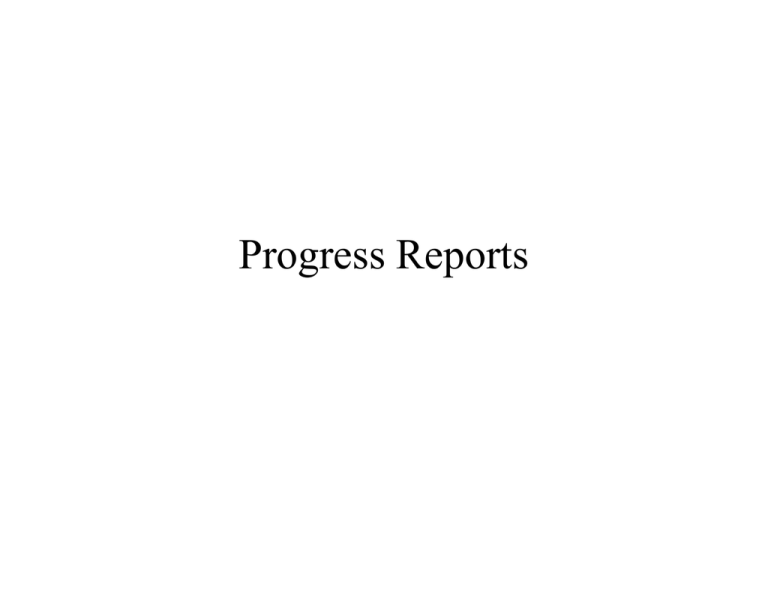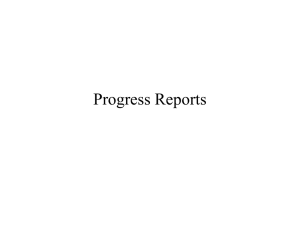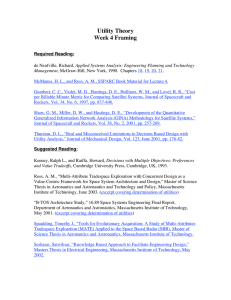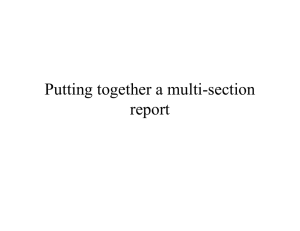Progress Reports
advertisement

Progress Reports Progress reports are essential. • Often part of scheduled deliverables • Maintain contact with funding $ource$, industry partners, and colleagues • Provide precise technical description of work as project develops and/or changes • Scrutinized for accountability and management practices Department of Aeronautics and Astronautics 2 In .622, the oral progress report • Is quite brief – 8 minutes presentation & 5 minutes discussion • Provides a milestone for the team • Identifies barriers to progress and ways to overcome them • Keeps faculty and staff up to date Department of Aeronautics and Astronautics 3 Formats for written and oral progress reports • Written progress reports can be a short report or even a memo or a lengthy letter. – Include project title, funding source (s), contract numbers, funding period, organizational/institutional information, contact information – Follow conventions for written documents: headings, page numbers, etc. Department of Aeronautics and Astronautics 4 • Oral progress reports can be brief (.622)or quite lengthy and can range from informal to very formal. • Some sort of visual organizer helps in an oral report (PPT for .622) or handouts, posters, etc – Include project title, team members, project advisor (s), date, relevant funding, institutional, or course data. – Follow conventions for effective oral presentations. Department of Aeronautics and Astronautics 5 Information organization for the .622 progress report • Brief introduction to project – Background, context and/or significance • • • • HOS Experimental overview and technical approach Progress to date or project status Problems and solutions to them – Problems are part of design, but your effort to address them is very important. Department of Aeronautics and Astronautics 6 Information organization continued • Design changes – Show the gap between what you planned to do and what you’ve done. – Design changes are sometimes inevitable, but be prepared to explain clearly. • Schedule (revised, if necessary) and statement of overall progress • Work to be done Department of Aeronautics and Astronautics 7 Tips for progress reports • Review audience analysis – Audience agendas for a progress report are different than they were for a proposal. • Different concern, different focus • Also, progress reports are where people hear about problems. – Audience for progress report is mixed. • Experts, technicians, laypeople, decision makers • Writer/speaker must modify “expert” dialog used within team and with advisor Department of Aeronautics and Astronautics 8 Tips. . . • Remember that it is more difficult to absorb information aurally than it is from text. – Plan to use a few effective graphics. – Think about what audience needs to know rather than everything that you know. – Think about pace of report, the way the screens look, font size. • Have a strong introduction and clear conclusion. • Remember to practice. – Control nerves, spot “rough” spots, edit, check timing Department of Aeronautics and Astronautics 9 Tips . . . . • Be prepared for rigorous or challenging questions and discussions. – Practice potential answers. – Have a few back up slides. – Maintain a non-defensive attitude. • Use the discussion period to ask your own questions. – Usually, the key people are all present, so use the time effectively. Department of Aeronautics and Astronautics 10











